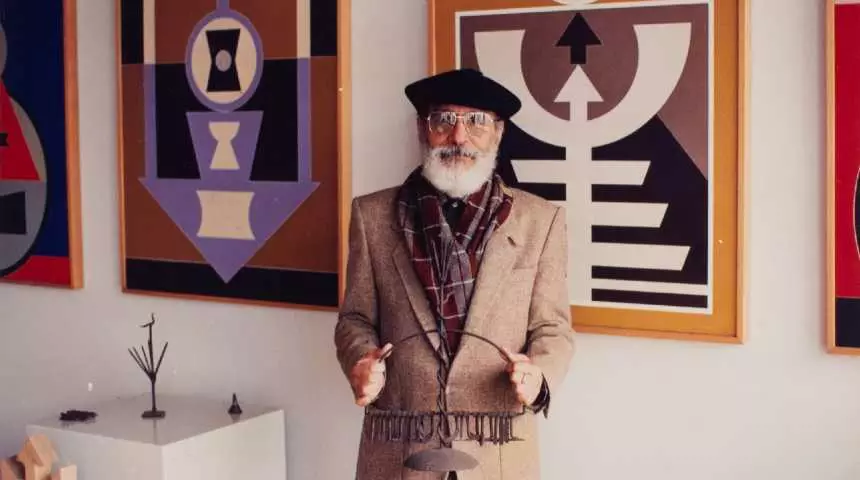
Rubem Valentim (1922–1991) was a Brazilian painter, sculptor, and educator celebrated for integrating Afro-Brazilian religious symbolism into modernist geometric abstraction. Born in Salvador, Bahia, he initially trained as a dentist and journalist before dedicating himself to art in the late 1940s. Valentim's work is characterized by vibrant compositions that merge sacred iconography from Candomblé and Umbanda—such as the double axe of Xangô and other orixá symbols—with the formal language of geometric abstraction. His "Emblema" series exemplifies this synthesis, creating a unique visual lexicon that reflects Brazil's cultural hybridity. In 1976, he authored the Manifesto ainda que tardio ("Manifesto, albeit late"), advocating for an anticolonial approach to art that honors Afro-Brazilian heritage. Valentim's works have been exhibited internationally, including retrospectives at the São Paulo Museum of Art (MASP) and participation in the Venice Biennale. His art is held in major collections such as the Museum of Modern Art (MoMA) in New York and the Pérez Art Museum Miami, underscoring his enduring impact on global modernism.
To provide the best experiences, we use technologies like cookies to store and/or access device information. Consent to these technologies will allow us to process data such as browsing behavior or unique IDs on this site. Not consenting or withdrawing consent may negatively affect certain features and functions.
Market reports for visionary collectors and insiders.